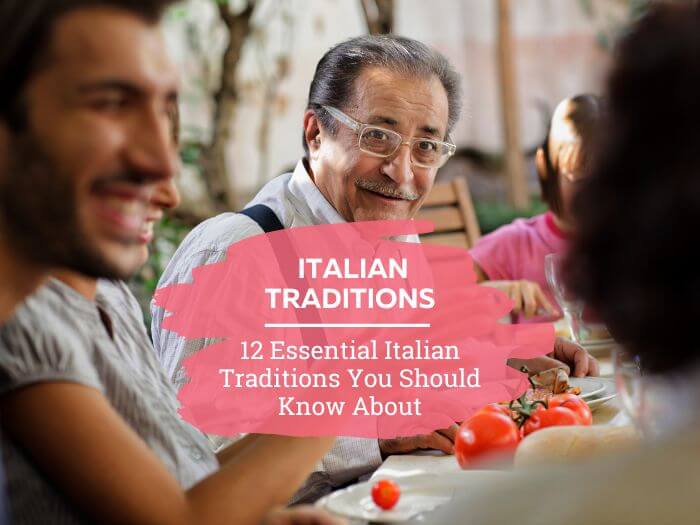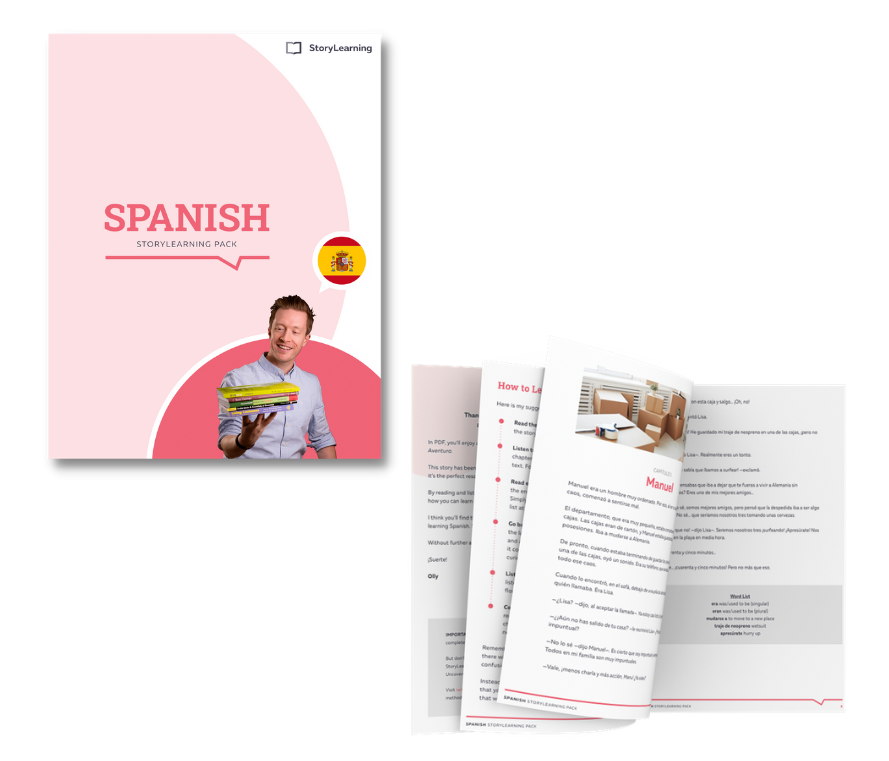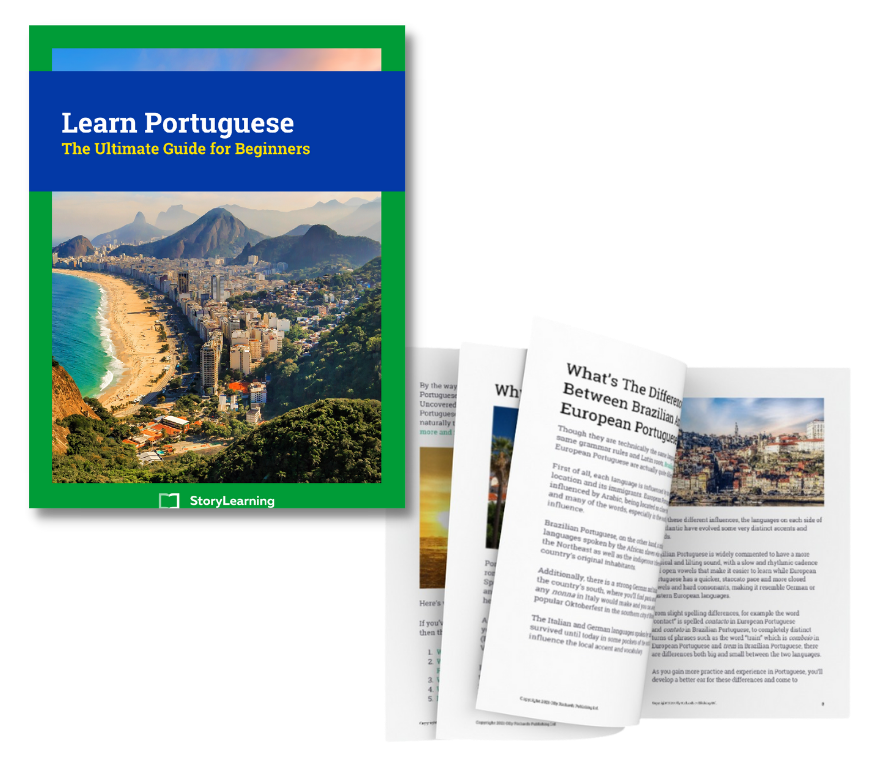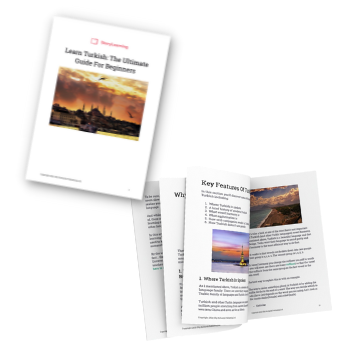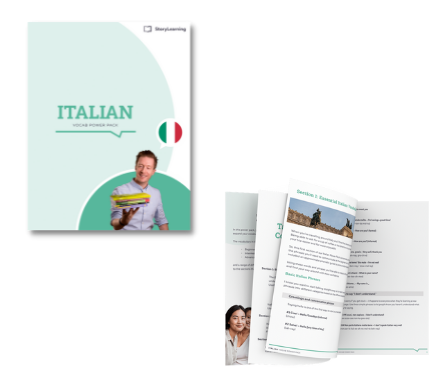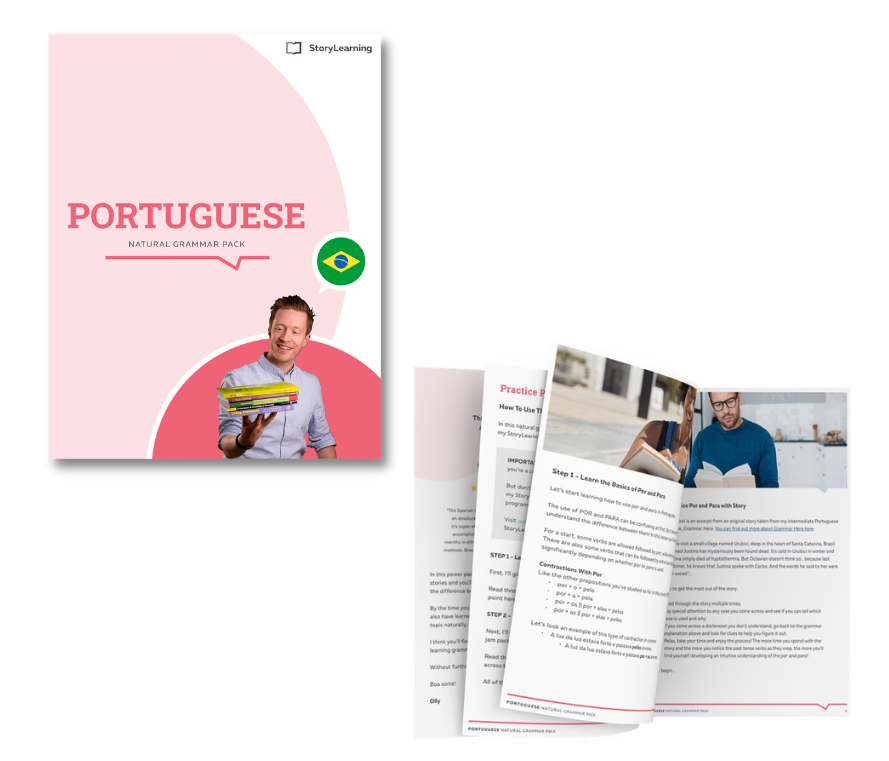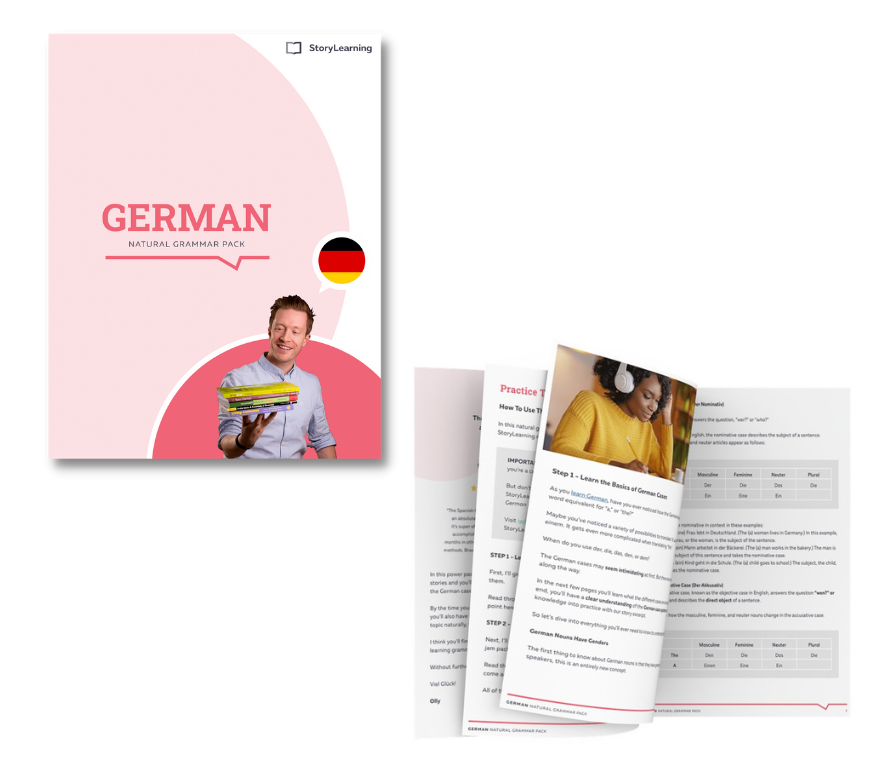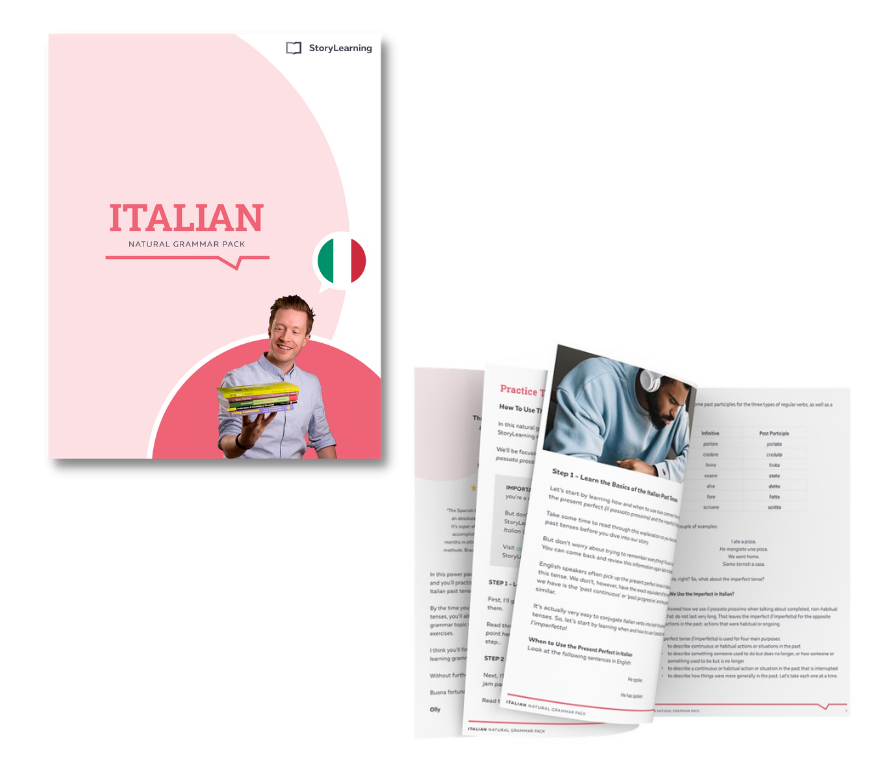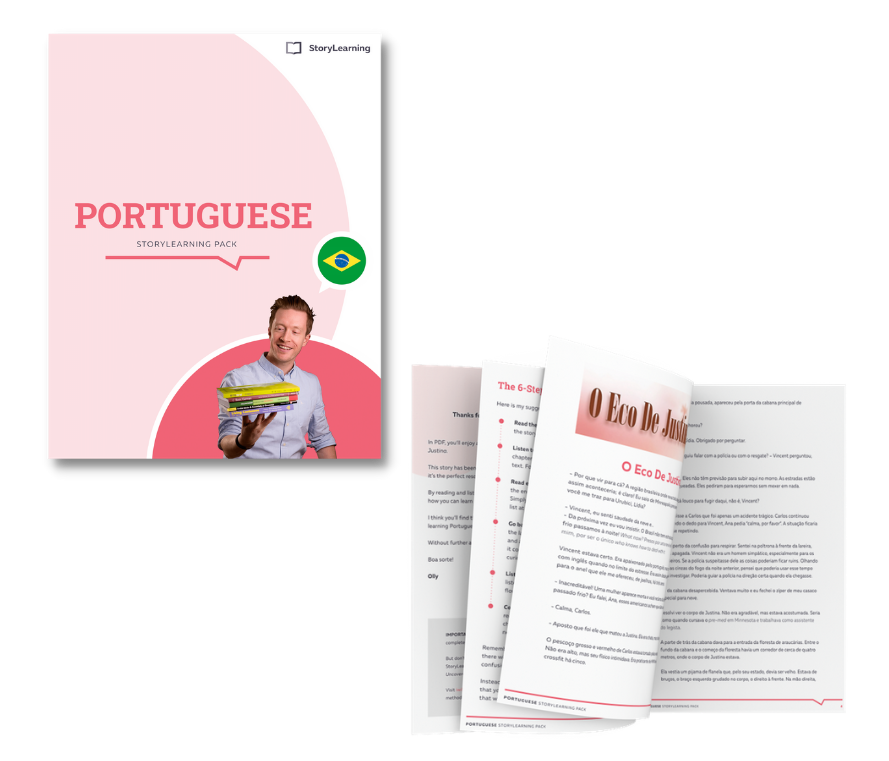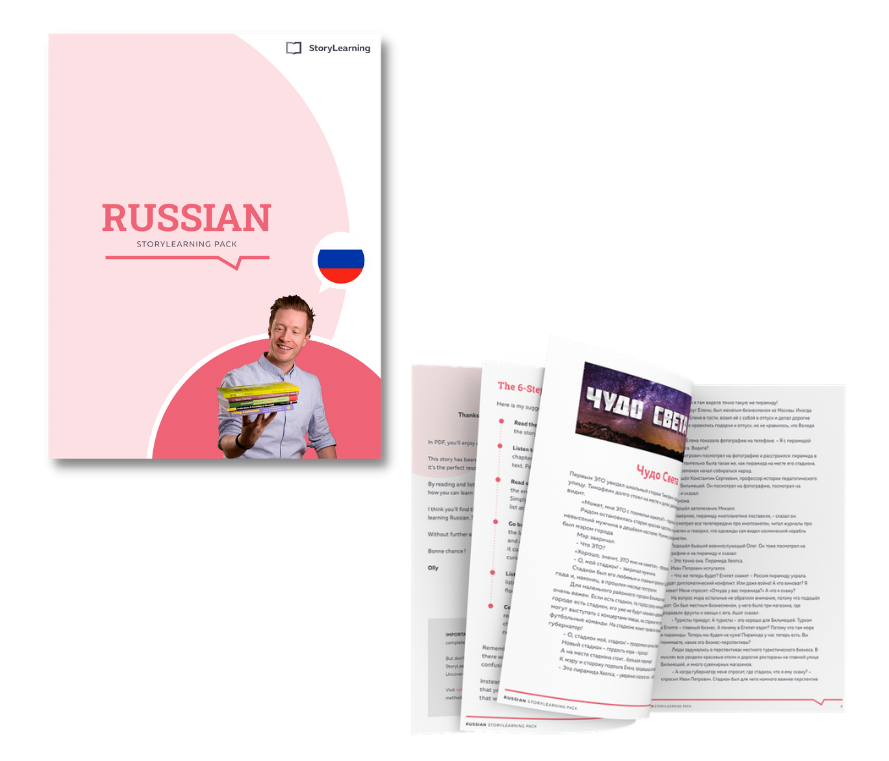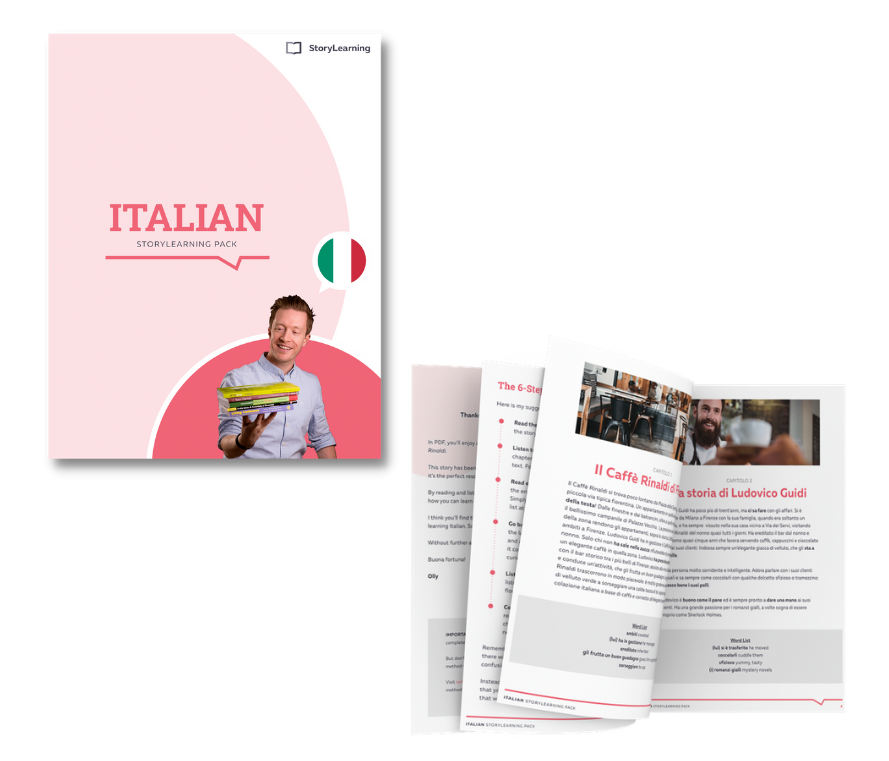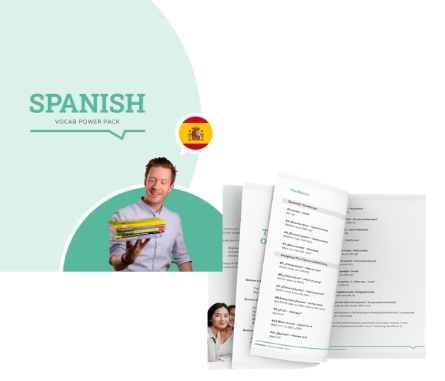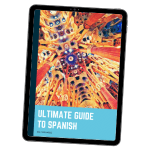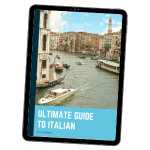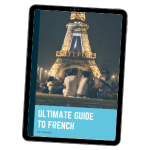Are you planning to travel to Italy, the country with the most World Heritage Sites in the world?
If so, what are some of the most common Italian traditions you should be aware of?
In this post, you’ll learn more about 12 of them.
Andiamo! (Let’s go!)
Pro Tip
By the way, if you want to learn Italian fast (including Italian traditions and culture), my top recommendation is Italian Uncovered which teaches you through StoryLearning®.
With Italian Uncovered you’ll use my unique StoryLearning® method to learn Italian naturally through story… not rules. It’s as fun as it is effective.
If you’re ready to start, click here for a 7-day FREE trial.
Table of Contents
1. Aperitivo

The word aperitivo comes from aperitivus, a Latin term that means “which opens the ways for elimination.”
What type of elimination? Let’s not go into that and focus instead on what aperitivo is in modern Italy.
Today, the term usually refers to a social occasion where Italians meet for drinks and nibbles before a meal.
This is not only a nice way to socialize but also a way to stimulate the appetite (as I said, it “opens the ways”) and enjoy some time with family, friends, or colleagues.
From the Alps down to Mount Etna, I’ve never met an Italian who doesn’t like having an aperitivo, though in my experience people from Milan are especially fond of it.
Typical drinks Italians have for aperitivo include
- beer
- Aperol Spritz (probably the most popular aperitif in Italy)
- Prosecco
- wine
- Campari col bianco (Campari with white wine)
- and cocktails like Bellini, Martini, Negroni (gin, red Vermouth, and Campari), and Negroni Sbagliato (or simply Sbagliato), which literally means “wrong Negroni” (it’s Negroni made with sparkling wine instead of gin).
Don't drink alcohol? No worries. There’s a range of alcohol-free drinks for you, the most popular of which is Crodino. Just ask the barman. 🙂
As for nibbles, Italians usually have chips (the hard ones that come in a plastic bag), olives, pickles, cured meats (salami, pancetta, bologna, prosciutto, and all the usual delicacies), cheeses, slices of pizza, focaccia, salted peanuts, veggies, and bread.
Sometimes there’s so much food that an aperitivo is no longer a pre-meal. It becomes the meal. When that’s the case, and if you have it at dinner time, Italians call the event apericena (cena = dinner).
Quick language note: Italians usually say fare un aperitivo.
Here’s an example in context:
Marco: “Facciamo un aperitivo stasera?” (“Let’s have an aperitivo this evening, shall we?”)
Sara: “Sì, perchè no? A che ora?” (“Yeah, why not? What time?”)
I don’t know about you, but I’m getting both hungry and thirsty now.
2. Sunday Lunch With The Family

I have an Italian friend from Lombardy, a region in the north, who’s always complaining about Sunday lunches at his Sicilian in-laws’. He likes the lasagna or fresh pasta his mother-in-law prepares, but he wouldn’t mind staying at home at least one Sunday a month.
Food is a big deal in Italy. Family is also a big deal, and so are Sundays. In southern regions, like Sicily, all this is a HUGE deal. So it’s common for Italian families, especially those from the south, to have lunch together on the last day of the week.
If you ever have an Italian wife, husband, fiancée, fiancé, or romantic partner, don’t be surprised if they ask you to have lunch with their parents on Sunday. Do you want to spend the whole Sunday chilling out in your pajamas? Forget about that.
Buon appetito!
3. Watching The Sanremo Music Festival
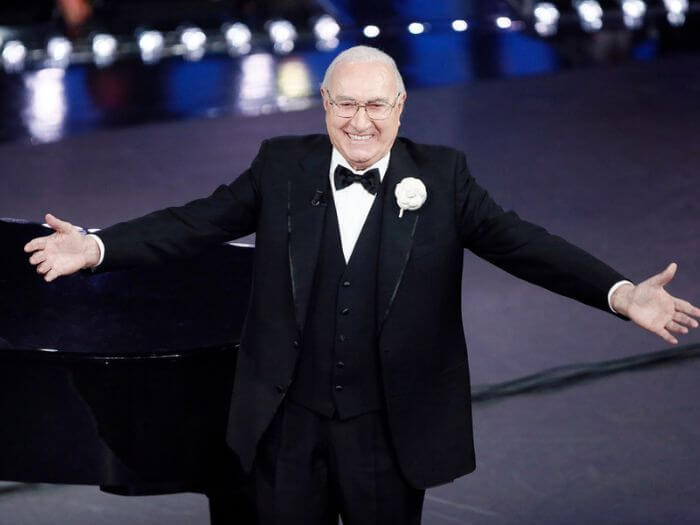
The Sanremo Music Festival, which Italians call “Festival di Sanremo” or simply “Sanremo,” is the most popular Italian song contest.
It takes its name from where it’s held every February: Sanremo, a city in Liguria—a region of north-western Italy.
The contest has been around for so long that it even made it to the Guinness World Records as the longest-running annual TV music competition on a national level. Italians have been enjoying the festival since 1951!
Teenagers watch it. Grandparents watch it. Everyone in Italy watches it!
No, actually that’s not true. I have Italian friends who couldn’t care less about it. Still, for many Italians, the Festival Della Canzone Italiana is one of the most anticipated events of the year.
The most passionate Sanremo lovers even play FantaSanremo, a game where you select a number of artists and get points based on what they do on the stage.
Did one of your singers kiss the TV presenter three times? That might earn you one point. Did they wear a black hat? Two points for you.
I’ve never played this game, so if you want to know more about it, have a look at this. There’s even an app for FantaSanremo!
And here are three Sanremo fun facts for you:
- Many world-famous Italian artists started their music careers by competing in the festival: Toto Cutugno, Laura Pausini, Eros Ramazzotti, Andrea Bocelli, Måneskin, and many others.
- Nel blu dipinto di blu (also known as “Volare”) by Domenico Modugno is one of the most popular Italian songs of all time. It won the 8th edition of the festival.
- Do you know the Eurovision Song Contest? It exists thanks also to Sanremo. The European competition was inspired by the Italian festival in 1956.
4. Carnevale (Not Just The One In Venice)
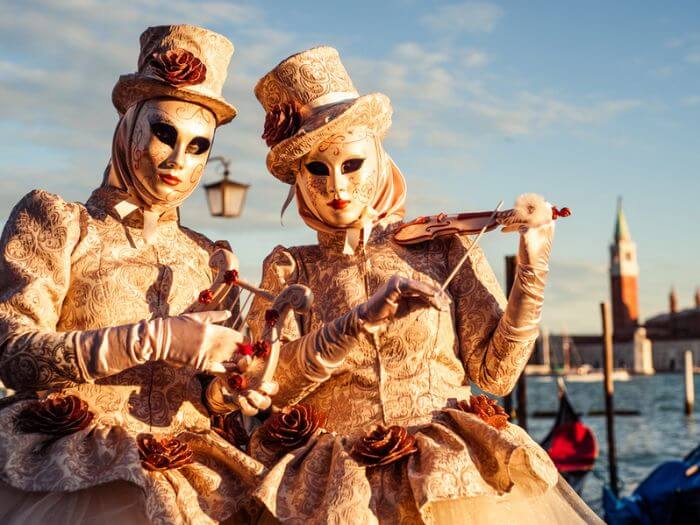
Millions of people flock to Venice in February to see the carnival. I’ve been one of those million carnival-goers, and I can tell you the Carnival of Venice is one of the most amazing festivals I’ve ever attended.
It’s also the biggest carnival celebration in Italy and one of the most popular carnivals in the world.
But there are other traditional Italian carnivals worth visiting. Two of these are the Carnival of Viareggio and the Carnival of Ivrea.
The former is the second-most popular in Italy. It lasts for a month, and it’s mostly known for the parade of floats and masks made of paper pulp. These works of art usually depict caricatures of famous people like politicians, football players, and singers.
The latter, the Carnival of Ivrea, is famous for the Battle of the Oranges, the biggest food fight in the country. I strongly advise protecting your face if you ever find yourself in the middle of this battle. (Watch this to see why.)
Whatever carnival you decide to go to, make sure you have plenty of memory space on your smartphone because it’s hard not to take hundreds of pictures while you’re there!
5. Ferragosto (15th August)

Over 2,000 years ago, in 18 BCE, Emperor Augustus made the first day of August a day of rest for agricultural workers. He introduced Feriae Augusti (“Holidays of the Emperor Augustus”) to celebrate the harvest and the end of a long period of hard work in the fields.
The Catholic Church then moved the holiday to the 15th of August, the date of the Assumption of Mary, which is still the day Italians celebrate Ferragosto today.
This is essentially a day of rest. Most businesses will be shut and, while foreign tourists go sightseeing in the major cities, most Italians will be lying on the beach somewhere along the coast or going on excursions in the mountains.
They might bring a packed lunch and enjoy the hot summer day with their families and friends.
If you decide to spend Ferragosto at the beach, watch out for gavettoni (water balloons). You might get one right in your face!
6. Palio di Siena
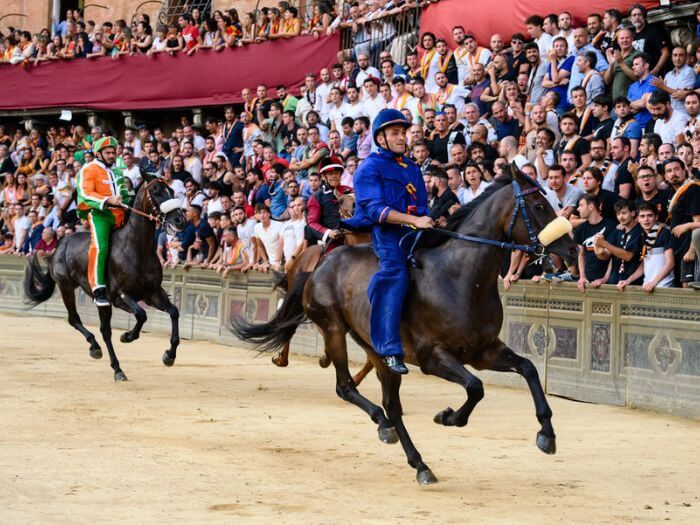
The Palio di Siena is a traditional horse race dating back to the 17th century.
It takes place twice a year in Siena, Tuscany, on the 2nd of July and on the 16th of August.
Ten jockeys (fantini) ride bareback around the Piazza del Campo, the main square of the city.
Each of the horses represents ten of the seventeen city wards (contrade): Unicorn, Tortoise, She-Wolf, Dragon, Seashell, Panther, Goose, Caterpillar, Porcupine, Wave, Owl, Ram, Snail, Tower, Eagle, Giraffe, and Forest.
Let me ask you a couple of trivia questions. Here’s the first one: What’s the prize for the winning contrada?
- 5,000 euros to invest in improving the contrada’s streets.
- A long thick curtain
- Nothing, there’s no prize
The winning prize is…the so-called Drappellone, a large drape. So the correct answer was b.
One more question: How long does the horse race usually last?
- 90 seconds
- 90 minutes
- 90 hours
You may be surprised to know that the whole race usually lasts less than two minutes. It’s run for only 3 laps, and it’s not uncommon to see some of the jockeys be thrown off their horses while making the sharp turns in the square.
A horse is not required to have a rider on to win the race, so this isn’t a big problem (at least for the horse, not for the jockey, who may be lying in pain on the ground).
The Palio is indeed a rather dangerous race. Unfortunately, several horses have died over the years, so Italian animal rights movements are often against it.
If you’d like to know more about Palio di Siena, read this article from visittuscany.com.
7. Festa dell Liberazione (Liberation Day)
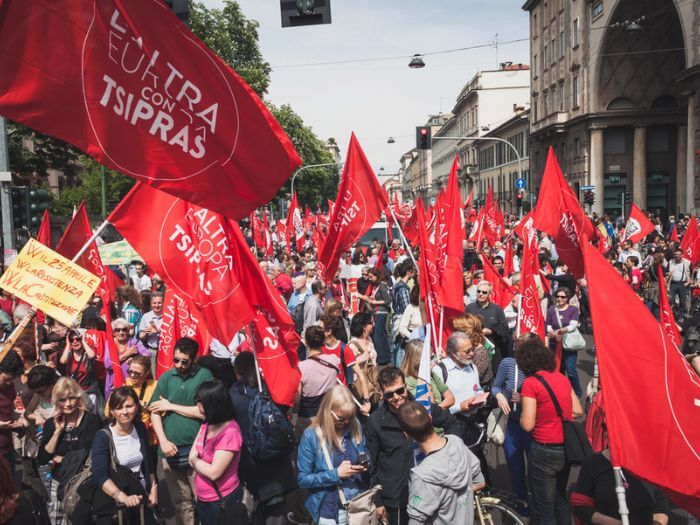
The 25th of April is a national holiday in Italy.
Italians celebrate the victory of the Italian resistance movement against Nazi Germany.
If you’re in one of the major Italian cities on the 25th of April, you might see marches and parades that commemorate the event.
If you’re in Rome, go to the Altare della Patria, also known as the Monument to Victor Emmanuel II or the Vittoriano.
On Liberation Day, the President of Italy and other important state officers will be there paying homage to the tomb of the Milite Ignoto (Italian Unknown Soldier), a war memorial dedicated to all those Italian soldiers killed and missing during the wars.
But let’s talk about something less depressing now: Natale!
8. Natale (Christmas)
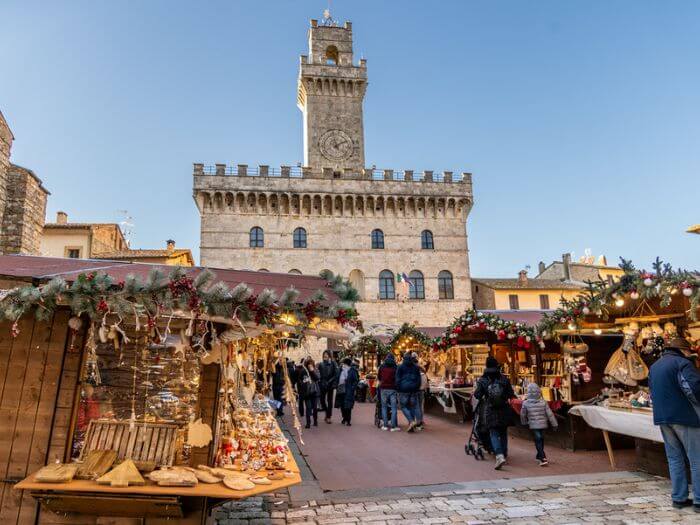
In Italy, like in most Christian countries, people celebrate Christmas.
You can smell Natale everywhere as early as November, when shopkeepers all over the Bel paese decorate their shop windows with snowflakes, garlands, and other typical ornaments.
In towns and cities, Christmas lights and mercatini di Natale (“little markets of Christmas”) brighten both the streets and the spirit.
In their homes, most Italians decorate the albero di Natale (Christmas tree). They typically do this on the 8th of December, il giorno dell’Immacolata Concezione, but I have friends who start earlier.
Presepe, (crib or Nativity Scenes), can also be found in homes, churches, and public places across the country. The one in Naples is probably the most well-known.
From north to south, Italians eat and drink a lot during the Christmas season, especially on Vigilia (Christmas Eve), Natale (Christma Day) and Santo Stefano (Boxing Day).
Panettone and Pandoro are sold in every supermarket in the country. Going to a supermarket or shopping mall during the holiday season is an experience in itself.
And if you find yourself spending Christmas day with an Italian family, they’ll invite you to play a variety of games. One of the most played is Tombola, a game similar to Bingo.
Oh, and don’t forget some useful Italian phrases for Christmas! Here are some you might hear:
- Buon Natale! (Merry Christmas!)
- Tanti Auguri! (literally “Many wishes!”)
- Buona Vigilia! (Happy Christmas Eve!)
- Buone Feste! (Happy festivities)
- Felice Anno Nuovo! (Happy New Year!)
Want even more Italian phrases? You'll love this list of Italian travel phrases I put together for you.
9. Capodanno (New Year's Eve)
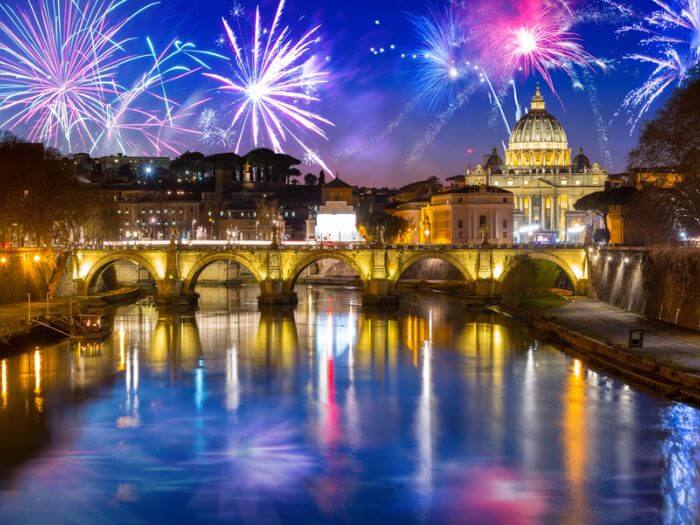
Italians commonly refer to New Year’s Eve as Capodanno or La Notte di San Silvestro (Saint Sylvester’s Night). How do they celebrate it? Not so differently from how many other countries do. Italians usually have a big dinner together (cenone), drink, and watch the fireworks.
A typical dish they eat is cotechino con le lenticchie, a type of spiced pork sausage with lentils usually eaten after midnight.
In Italy, having lentils at the start of the new year is believed to bring money, though an Italian friend of mine says he’s been eating lentils all his life but he hasn’t seen much financial success yet!
Whether you believe lentils have this magic power or not, enjoy them with your Italian friends and a glass of good red wine.
That may be enough to feel happy.
10. Epifania (Befana)

Epiphany is a national holiday in Italy. It’s celebrated on the 6th of January.
Italians say, “L’Epifania tutte le feste porta via.” Roughly translated, this means “Epiphany takes away all the festivities” (unfortunately the saying doesn’t rhyme in English).
Epiphany indeed marks the end of the Christmas season, and it celebrates the Three Wise Men visiting baby Jesus.
But there’s more to this day than its religious significance.
Every Italian knows that the 6th of January is the day of La Befana, a witch-like woman who travels on a broomstick and brings sweets to well-behaved children (bambini bravi/buoni) and lumps of coal to the more mischievous ones (bambini cattivi).
La Befana is central to Italian folklore. If you’re in one of the major cities, you’ll see celebrations and people dressed as one. But the best city to be on the 6th of January to celebrate the day is Urbania, where something like 30,000 people will be there for La Festa della Befana.
11. Pasqua (Easter)
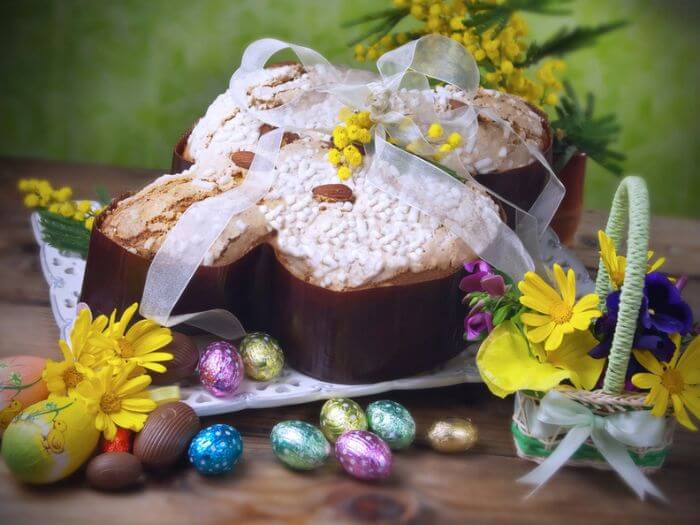
Italians say, Natale con i tuoi, Pasqua con chi vuoi (Christmas with you and yours, Easter with whoever you want), meaning that you should celebrate Christmas with your family, while you’re free to spend Easter with whoever else you feel like.
Pasqua is one of the most important religious and cultural celebrations for Italians. Holy Week (Settimana Santa) is filled with processions and masses.
One of the most famous traditions is Florence’s Scoppio del Carro (Explosion of the Cart), a centuries-old spectacle where a decorated cart filled with fireworks is set off in front of the Duomo di Firenze.
Unlike in Anglo-Saxon countries, chocolate bunnies are not that popular. Instead, Italians prefer giant chocolate Easter eggs (uova di Pasqua) with surprise gifts inside. Children (and often adults) love these.
No matter who you decide to spend Pasqua with, get your fork ready. Traditional Easter dishes include agnello (lamb), torta pasqualina (a savory Easter pie from Liguria), and Colomba, a sweet bread shaped like a dove. This is eaten as a dessert, and it’s similar to panettone.
Italians have an idiomatic expression about this religious holiday: Essere felici come una Pasqua (to be as happy as Easter). Pasqua is indeed a happy time for the citizen of the Bel paese.
12. Pasquetta (Little Easter)
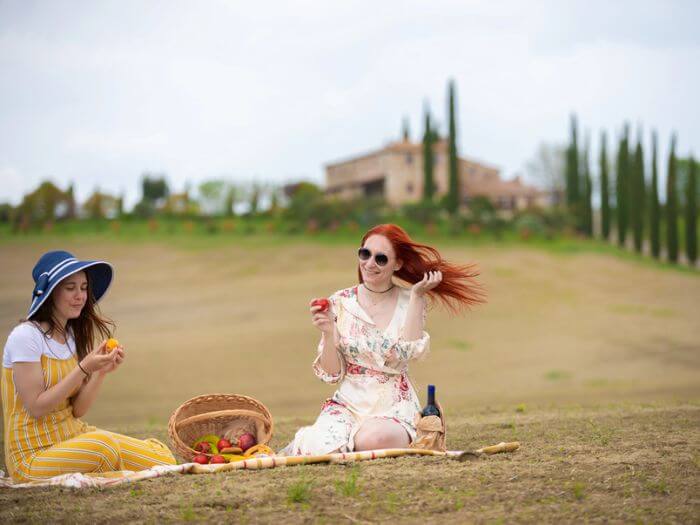
Pasquetta is what English speakers call Easter Monday. For Italians, this day is all about barbecue food, picnics, fun, and friends. They make the most of it by heading outdoors. If the weather doesn’t allow that, they’ll usually be quite disappointed.
But if it’s sunny, they’ll pack their baskets with food and go spend the day in the park, eating, laughing, and relaxing. If you ever wonder why green areas and scenic spots are unusually crowded on this day, now you know!
Some towns have their own unique Pasquetta traditions. For example, in Panicale (Umbria), locals play Ruzzolone, a game where players roll giant wheels of cheese through the streets.
One of the best things about Pasquetta? There are no strict rules—the goal is simply to enjoy good food and company. So, if an Italian ever invites you for a Pasquetta outing, say yes—and bring a bottle of wine. Red, white, green, yellow—anything goes!

Italian Traditions FAQ
What is the main tradition of Italy?
Italy is known for its rich cultural traditions, with festivals, food, and family gatherings playing a central role.
Religious celebrations like Christmas, Easter, and Ferragosto (Assumption Day) are widely observed, along with unique regional festivals such as Carnival in Venice and Palio di Siena horse race.
What is Italy family tradition?
Family is at the heart of Italian culture, and large family meals on Sundays are a cherished tradition.
Italians prioritize close family ties, often gathering for multi-course meals where traditional dishes are shared.
Celebrations like baptisms, weddings, and name days (onomastico) are also significant.
What is Italian culture most known for?
Italy is famous for its contributions to art, fashion, food, music, and architecture.
The country is known for pasta, pizza, and wine, as well as historic landmarks like the Colosseum and Leaning Tower of Pisa.
Italy also has a strong tradition in opera, Renaissance art, and high-end fashion from brands like Gucci and Prada.
What are some Italian American traditions?
Italian Americans have preserved many cultural traditions, especially around food and family gatherings.
Celebrations like Feast of the Seven Fishes on Christmas Eve, St. Joseph’s Day, and Columbus Day are common.
Many Italian American families continue traditions of homemade pasta, Sunday dinners, and strong community ties.
Final Thoughts On Italian Traditions
Did you enjoy reading this list of Italian traditions? I hope so! There’s so much to experience and celebrate in Italy, so I’m sure you’ll enjoy your time there.
If you need help with your Italian before you plan your trip to the Bel paese, you might want to take one of my Italian courses. You'll improve your skills through stories, and you'll get lessons about Italian culture, too.
You can try one of these courses for free.
Alla prossima! (See you next time.)

Olly Richards
Creator of the StoryLearning® Method
Olly Richards is a renowned polyglot and language learning expert with over 15 years of experience teaching millions through his innovative StoryLearning® method. He is the creator of StoryLearning, one of the world's largest language learning blogs with 500,000+ monthly readers.
Olly has authored 30+ language learning books and courses, including the bestselling "Short Stories" series published by Teach Yourself.
When not developing new teaching methods, Richards practices what he preaches—he speaks 8 languages fluently and continues learning new ones through his own methodology.
